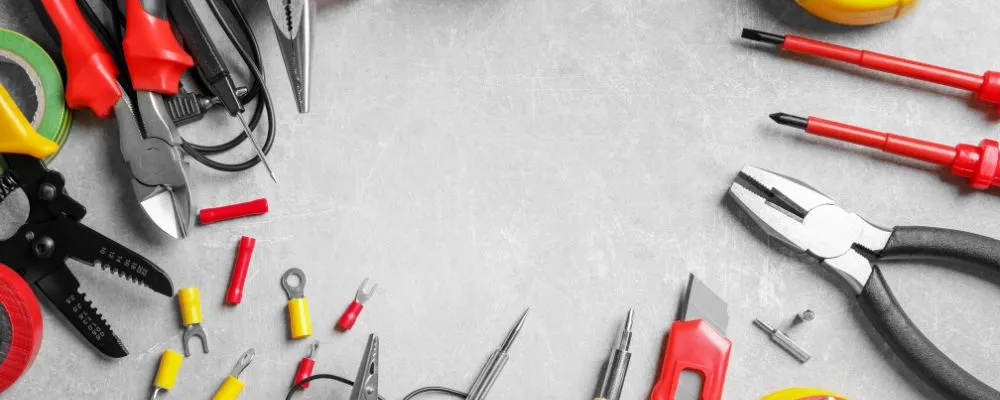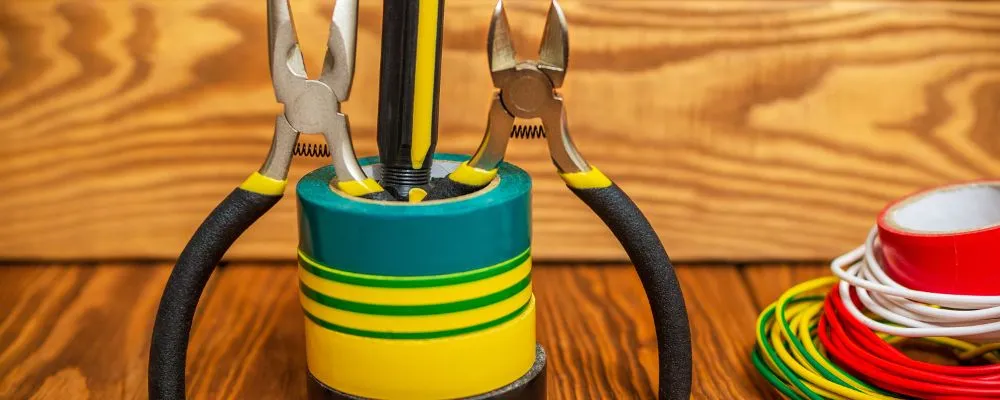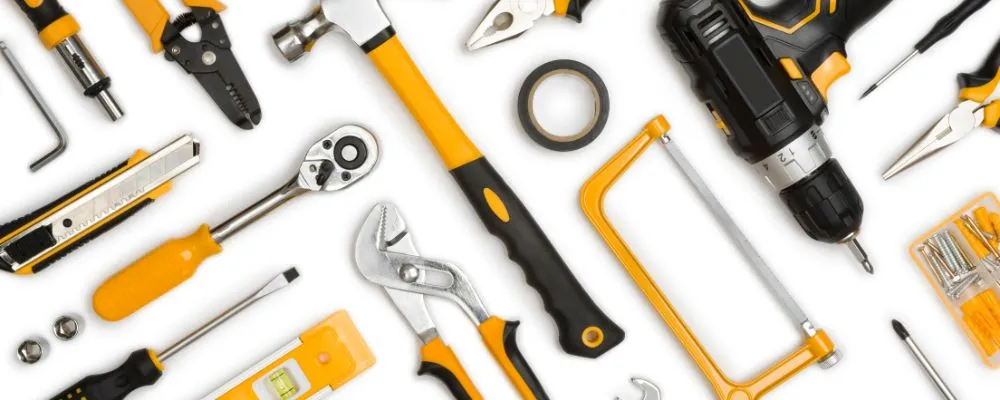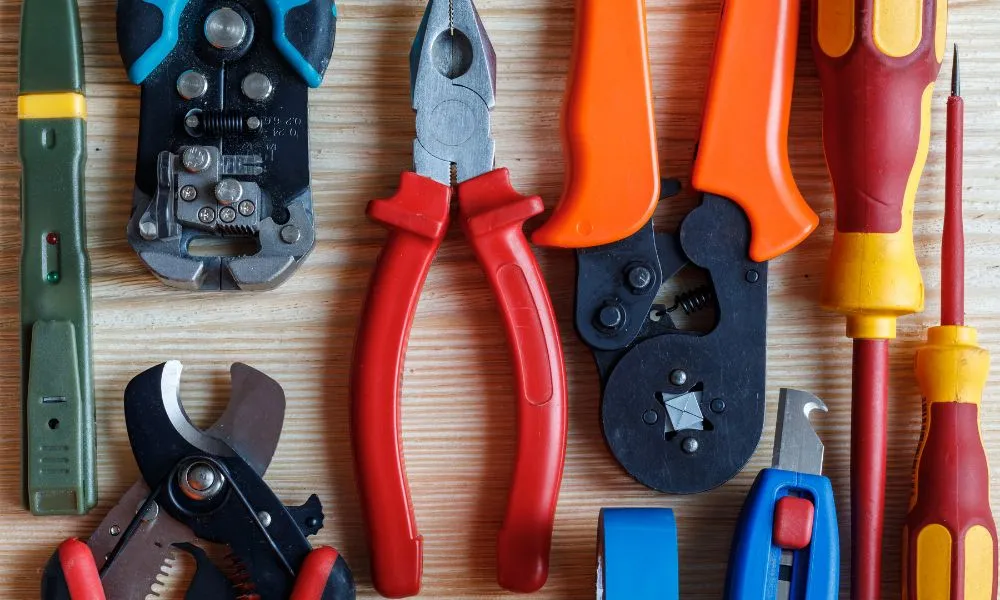Double insulated tools are an essential part of any professional’s toolkit. Designed to offer an extra layer of protection against electric shock, these tools ensure a safe and secure working environment. With their unique construction, these tools provide an unparalleled level of insulation, greatly reducing the risk of electrical accidents. Whether you are an electrician, mechanic, or simply someone who frequently deals with electrical components, you cannot overstate the importance of using these tools. In this article, we will explore the benefits and features of these tools, highlighting why they are a crucial investment for any professional.
What are Double Insulated Tools?
Double insulated tools are electrical devices designed specifically to provide an extra layer of protection against electrical shock. They feature two layers of insulation which isolates the electrical components from the outer casing, reducing the risk of electrical current flowing through the tool and contacting the user. Double insulation is typically found in hand tools and power tools, ensuring improved safety for both professional tradespeople and DIY enthusiasts.
Definition
Double insulated tools are tools that have been constructed with two layers of insulation to protect against electrical shock. The purpose of this additional insulation is to eliminate the need for a ground wire, as the double insulation provides an extra barrier of protection against electrical hazards.
Purpose
The primary purpose of double insulation in tools is to enhance user safety. By having two layers of insulation, these tools reduce the risk of electrical shock, thermal burns, and fires. These tools are particularly useful in situations where a grounded power source may not be available or if the user is operating in a hazardous environment.
How do they work?
They work by incorporating two layers of insulation between the electrical components and the outer casing. The first layer of insulation provides basic insulation, while the second layer acts as supplementary insulation. This combination prevents the flow of electrical current through the tool’s exterior, protecting the user from potential electric shock. In the event of a malfunction or damage to the outer insulation, the supplementary insulation ensures that an additional barrier remains intact.

Advantages of Double Insulated Tools
Electrical Shock Protection
The primary advantage of double insulated tools is the enhanced protection they provide against electrical shock. The double insulation effectively isolates the electrical components from the outer casing, reducing the risk of electric shock to the user during operation.
Fire Safety
Double insulated tools also contribute to fire safety. By preventing the flow of electrical current through the outer casing, these tools reduce the likelihood of short circuits and electrical sparks, which can potentially ignite flammable materials.
Compatibility with Ungrounded Outlets
Double insulated tools are compatible with ungrounded outlets, making them more versatile in various work environments. They eliminate the need for a grounding connection, allowing users to operate the tools safely, even if grounded outlets are not available.
Reduced Risk of Electric Arcs
Another advantage of these tools is the reduced risk of electric arcs. Electric arcs occur when there is a sudden discharge of electricity through the air between two conductive objects. The insulation layers in them prevent the formation of electric arcs, thereby minimizing the risk of injury or equipment damage.
Insulation Durability
Double insulated tools are designed to be durable and long-lasting. The double insulation adds an extra layer of protection, making the tools more resistant to wear and tear. This durability ensures that the insulation remains effective throughout the tool’s lifespan, providing consistent safety for the user.
Types of Double Insulation
Various types of double insulation exist, each offering a unique level of protection. The specific type used in a tool depends on its intended purpose and the applicable safety standards. The most common types of double insulation include:
Type 1 – Basic Insulation
Type 1 double insulation refers to tools that provide a single layer of insulation between the electrical components and the user. This basic insulation is typically sufficient for low-voltage applications where direct contact with live electrical parts is unlikely.
Type 2 – Protective Earth Bonding
Type 2 double insulation includes additional protection in the form of a protective earth bonding connection. This type of insulation offers an extra layer of safety by connecting the metal parts of the tool to an earth conductor. This bonding connection enhances electrical safety, especially in situations where a fault might cause a high leakage current.
Type 3 – Supplementary Insulation
Type 3 double insulation provides supplementary insulation in addition to the basic insulation. The supplementary insulation acts as a secondary barrier, protecting the user from electrical shock in the event of a fault or damage to the primary insulation.
Type 4 – Electrically Non-Conductive Coating
Type 4 double insulation involves a combination of basic insulation and an electrically non-conductive coating applied to the tool’s external surfaces. This coating prevents the flow of electrical current through the tool’s casing, further enhancing user safety.

Standards and Certification
Double insulated tools are subject to specific standards and certifications to ensure their safety and effectiveness. Adherence to these standards and certifications provides assurance that the tools have undergone rigorous testing and comply with industry-recognized safety requirements.
International Electrotechnical Commission (IEC) Standards
The International Electrotechnical Commission (IEC) is a global organization that sets international standards for electrical, electronic, and related technologies. The IEC provides standards (such as IEC 61140) for the design, testing, and qualification of double insulated tools to ensure their safety and compatibility.
Underwriters Laboratories (UL) Certification
Underwriters Laboratories (UL) is an independent safety certification organization that tests and certifies various products, including double insulated tools. UL certification ensures that the tools meet high safety standards and comply with electrical codes and regulations.
European Conformity (CE) Marking
The CE marking is a certification mark that indicates a product’s compliance with health, safety, and environmental protection standards in the European Economic Area. It signifies that the double insulated tool meets the essential requirements and they are legally availabe within the European market.
Common Double Insulated Hand Tools
Various types of hand tools are available in the market, ensuring safety across a wide range of applications. Some common double insulated hand tools include:
Double Insulated Screwdrivers
Double insulated screwdrivers are designed with two layers of insulation. They allow users to safely handle them while performing tasks that may involve electrical connections. These tools are essential for electricians, technicians, and anyone working with electrical circuits.
Double Insulated Pliers
Double insulated pliers provide an additional layer of insulation to protect against electrical shock. They are commonly used in electrical installation and maintenance work, allowing users to safely grip and manipulate wires and other electrical components.
Double Insulated Drills
Double insulated drills are essential for construction and woodworking tasks that involve drilling into potentially live circuits. The double insulation provides peace of mind while operating the drill, reducing the risk of electrical shock.
Double Insulated Saws
Double insulated saws are specifically designed for cutting materials that may be in close proximity to live electrical components. These tools ensure safety while working with materials such as plastic, wood, or metal that may conduct electricity.
Double Insulated Hammers
Double insulated hammers are essential for construction and other applications where there may be a risk of accidentally striking live electrical components. The double insulation provides protection against electrical shock while using the hammer.
Double Insulated Wrenches
Double insulated wrenches are designed to safely handle fasteners in electrical systems. These tools provide the necessary insulation, allowing users to tighten or loosen nuts and bolts without the risk of electrical shock.

Applications of Double Insulated Tools
These tools find application in various industries and settings where electrical safety is paramount. Some common applications include:
Construction Sites
Double insulated tools are widely used in construction sites where workers are exposed to electrical hazards. These tools offer an extra layer of protection for tasks such as electrical installation, wiring, and maintenance.
Electrical Wiring and Maintenance
They are crucial for professionals involved in electrical wiring and maintenance work. Electricians and technicians rely on these tools to safely perform tasks such as troubleshooting, repairs, and installations.
Automotive Industry
In the automotive industry, these tools are essential for working on vehicles’ electrical components, including wiring, battery terminals, and ignition systems. These tools ensure the safety of mechanics when handling potentially live electrical systems.
Electronic Repairs
Double insulated tools are commonly used in electronic repair shops and industries that deal with the repair and maintenance of electronic devices. Technicians use these tools to work on circuit boards and other sensitive electrical components.
HVAC Systems
Heating, ventilation, and air conditioning (HVAC) systems often require electrical work. Double insulated tools allow HVAC technicians to safely install, repair, and troubleshoot various electrical components within HVAC systems.
Industrial Manufacturing
In industrial manufacturing settings, double insulated tools are used to work on electrical control panels, machinery, and equipment. These tools provide an additional layer of safety for operators and maintenance personnel working on live electrical systems.
How to Choose Double Insulated Tools
When selecting double insulated tools, several factors should be considered to ensure the tools are suitable for the intended application and meet necessary safety requirements. Here are some key considerations:
Consider the Task and Voltage
Different tasks and voltages require specific types of double insulated tools. One should assess the voltage levels and the nature of the work to determine the appropriate tool for the job. Higher voltage applications may necessitate tools with more stringent insulation requirements.
Check for Proper Certification
Always choose double insulated tools that have the necessary certifications, such as those from recognized organizations like UL. Certification ensures that the tools meet all the safety standards. It also ensures the thorough testing of the tools.
Evaluate Insulation Material
Consider the type and quality of insulation material used in the tools. Look for tools that use durable and reliable materials to ensure long-lasting insulation performance.
Ergonomics and Comfort
Comfort and ergonomics play a significant role in tool selection. Look for tools with ergonomic designs that offer a comfortable grip and minimize fatigue during extended use. A comfortable, well-designed tool can improve productivity and reduce the risk of accidents.
Durability and Warranty
Consider the tools’ durability and warranty. Inspect the construction and materials of the tools to ensure they can withstand the demands of the intended application. Additionally, check for warranties offered by the manufacturer, as they provide assurance of quality and after-sales support.
Proper Use and Maintenance
Proper use and maintenance of double insulated tools are crucial for ensuring their ongoing effectiveness and safety. Follow these guidelines to maximize the lifespan and performance of your tools:
Inspect for Damage
Regularly inspect your tools for any signs of damage, such as cracks, frayed cords, or exposed wiring. If any damage is detected, discontinue use and have the tool repaired or replaced.
Keep Tools Clean and Dry
Keep your tools clean and dry to prevent moisture or debris from compromising the insulation. Regularly wipe down the tools after use and store them in a cool, dry environment.
Store and Transport Carefully
When not in use, store your tools in a designated toolbox or storage container. Avoid dropping or mishandling the tools, as this can potentially damage the insulation.
Avoid Overloading or Misusing
Use your double insulated tools within their recommended capacity. Avoid exceeding their maximum load limits or using them for irrelvant tasks. Overloading or misusing the tools can compromise their insulation and put the user at risk.
Follow Manufacturer’s Instructions
Always follow the manufacturer’s instructions for the proper use and maintenance of your double insulated tools. The instructions provided by the manufacturer are specific to the tool and will ensure that you use it safely and effectively.
Regularly Test Insulation Resistance
Periodically test the insulation resistance of your double insulated tools using a megohmmeter or an insulation resistance tester. This testing will help identify any deterioration in the insulation and provide an early indication of potential safety issues.
Safety Precautions with Double Insulated Tools
While double insulated tools provide an extra layer of protection, it is still crucial to observe safety precautions to minimize the risk of accidents or injuries. Here are some essential safety measures to follow:
Wear Appropriate Personal Protective Equipment (PPE)
Always wear the appropriate personal protective equipment, such as gloves, safety glasses, and non-conductive footwear, when using double insulated tools. PPE provides an additional layer of protection against electrical hazards.
Avoid Excessive Force
Do not apply excessive force or use double insulated tools for tasks beyond their design capabilities. Excess force can increase the risk of damage to the tool’s insulation, compromising safety.
Do Not Modify or Remove Insulation
Never modify or remove the insulation from double insulated tools. Any alterations to the tool can compromise its safety features and render it unsuitable for use.
Disconnect Power Source Before Working
Always disconnect the power source before working with double insulated tools. This precaution ensures that there is no electrical current flowing through the tool during maintenance or troubleshooting.
Use Insulated Extension Cords
When using double insulated power tools, ensure that the extension cords used are also insulated. Insulated extension cords provide an additional layer of protection and reduce the risk of electric shock.
Regularly Train and Educate Workers
For workplaces where multiple individuals use double insulated tools, regular training and education on their correct and safe usage are essential. Properly trained workers are more likely to minimize risks and handle tools safely.
Be Aware of Surroundings
Maintain awareness of your surroundings when using double insulated tools. Avoid working in wet or damp conditions, and be mindful of the presence of other potential electrical hazards.
Understanding the Limitations
While double insulated tools offer significant safety benefits, it is important to understand their limitations to ensure proper usage in appropriate situations.
Not a Substitute for Grounding
Double insulation should not be considered a substitute for grounding. In applications where a grounding connection is required, such as high-voltage or sensitive electronic systems, additional measures must be taken to ensure proper grounding.
Not Suitable for All Situations
Double insulated tools may not be suitable for all situations. Evaluate the specific requirements and consult industry safety guidelines to determine whether double insulated tools are appropriate for a particular application.
Cautions against Working in Wet Conditions
Double insulated tools are not designed for use in wet conditions or in the presence of excessive moisture. Working in such conditions can compromise the tool’s effectiveness and increase the risk of electrical shock.
